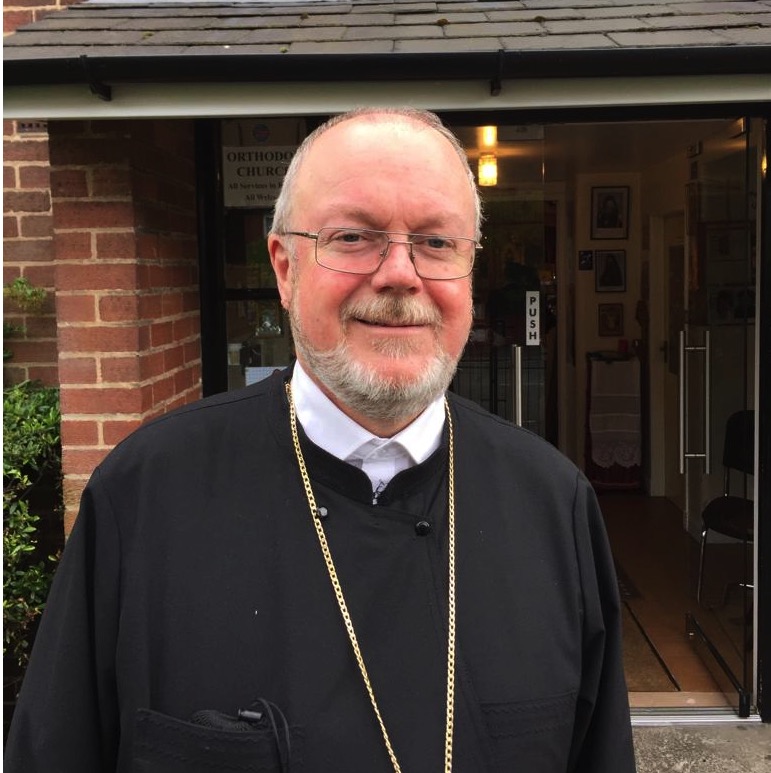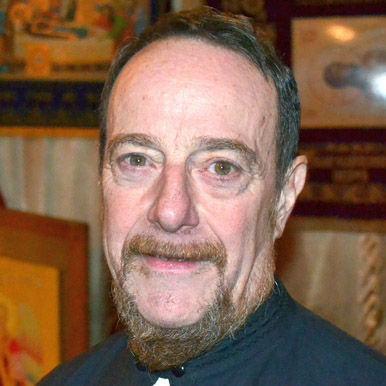Yesterday we commemorated the Protection of our Most Holy Lady the Mother of God and Ever-Virgin Mary. What we are remembering is a vision of the Mother of God, the Theotokos, in the Blachernae Church in Constantinople in the middle of the 9th century. The Theotokos appeared along with St John the Baptist and John the Theologian and took Her veil and spread it over all the people in the church; and she prayed: “O Heavenly King, accept all those who pray to You and call on My name for help. Do not let them go away from My icon unheard.” Two young people who were present in the church, Andrew and Epiphanius “for a long time observed the Protecting Veil spread over the people and shining with flashes of glory.” Further information is on the website of the Orthodox Church of America at https://oca.org for October 1st.
At that time, Constantinople needed the Protection of the Mother of God because of an imminent attack by a largely pagan Russian fleet. A few days later the fleet was destroyed; and the city was saved. This morning I would like to consider how we too need the protection of the Mother of God; and about how she protected a group of Christians from the Old Christians Rugby team in Uruguay in South America, when their plane crashed in the Andes mountains on the 12th of October 1972. Further information is in a book available in many libraries, I Had to Survive, written in 2016 by a survivor of that crash, Dr. Roberto Canessa.
Now, these three places are very different—a church in Constantinople in the ninth century, a plane crash in the Andes Mountains in the twentieth century and us here today. Yet, yet, we are all in the same situation: we each need the protection of the Lord and of the Mother of God to live our lives to the full. When that plane crashed, as Roberto wrote, “Everything we might have brought with us from the outside world—selfishness, vanity, dishonor, greed—was forgotten in this frozen world.” It would have been the same in the spiritual world of that church in Constantinople. It can be the same for us today. We do not need to see the Mother of God to know that she continues to guide and protect us.
That attitude to the Mother of God is not based on age. Roberto, who helped 16 people to survive, was a teenager of 19, as was his girlfriend back home, Lauri, also aged 19, who prayed every day in her local church for more than two months for his return. One of the pilots who tried unsuccessfully to find the crash site, Flight Major Ruben Terra, got into trouble when one of his engines failed, as he searched for the fallen plane. That pilot reflected: “During those uncertain moments when one of our engines was sputtering over the Andes mountains, I thought back on one of the many poems by the French aviator and author [of The Little Prince], Antoine de Saint-Exupéry, who had so often flown over these very mountains. During emergencies like the ones we experienced, Saint-Exupéry clung to the Virgin Mary, protector of all aviators, whom he believed was always with us.”
That Flight Major who was in charge of the rescue team from Chile failed to find the crash site, where the survivors were huddled together inside the broken fuselage of the plane, in the midst of heavy snow. Roberto and his close friend, Nando Parrado, a fellow member of the Old Christians Rugby team, and also 19 years old, had to walk and climb in the mountains for 10 days in order to bring help to the other survivors in the crashed plane. For that pilot trying to find the crash site, for Roberto and his rugby-playing friends, and for us, there are always “uncertain moments” in our lives. That is precisely when we need protection from the Lord and the Mother of God.
The two young people, now saints, who saw the Mother of God in that church in Constantinople said that “as long as the Most Holy Theotokos was there, the Protecting Veil was also visible, but with her departure it became invisible. After taking the veil with her, she left behind the grace of her Visitation.” That grace—that love that the Lord offers each of us—was present on that crash site in the Andes and is still present with us today. As Roberto wrote of his 70 days in the mountains and his relationships with those who survived: “We were overwhelmed by a deep, loving connection with one another and with God.”
Over many years, 27 planes had crashed into the Andes; however, there had never been a single survivor. How did Roberto survive for 70 days in the mountains in the midst of winter without adequate preparation? He stayed calm and kept faith that God wouldn’t let him down. The people in the church in Constantinople, in the face of an overwhelming invasion, had the same attitude: God does not let his friends down. He may not give us exactly what we ask for, but He does protect us.
Roberto learned that his survival in the mountains “was only the penultimate [that is, the next to last] obstacle in his life. The final challenge,” he wrote, “was finding a way to return to a simple, [authentic] honest life.” It is the same for us, and for the people in that church in Constantinople. Roberto was especially grateful to the shepherds who he and his friend Nando met after their exhausting hike. Those shepherds got them across a huge river and helped them recover from their ordeal. Roberto wrote: “Before I got on the helicopter, I went over to shake hands with each of the shepherds … When I thanked them, they looked at me with utter surprise, as is if there was nothing to thank them for.” Roberto reflected: “Blessed are the humble, for they shall inherit the earth.”
Roberto Canessa became a heart surgeon who worked solely with children, a pediatric cardiologist. He asked his life-long friend Pablo Vierci to help him write about and understand “the larger picture of how his ordeal on the mountain had influenced the course of his life.” Because of the plane crash, he learned to see each fetus in the womb and each new-born baby as a potential survivor, no matter how great the challenges they faced. That was why the story of the plane crash and its survivors was called I Had to Survive: How a plane crash in the Andes helped me to save lives.
The vision of the Protecting Veil in the church in Constantinople was clearly a miracle. When Roberto, lying in his hospital bed, was asked by a journalist whether the saving of his life was a miracle, there was a nurse eight months pregnant beside him. Roberto replied, “No, and motioning to the pregnant nurse, he said, “There is the miracle.” That’s true—we don’t fully understand how a human life begins. Roberto wrote that what he did when he began his impossible journey from the edge of the glacier where the plane had crashed was simply to “give myself small, attainable goals to help me keep pushing forward. It could be just reaching that next boulder, that next cliff, that next rock formation, and focusing only on that small goal and nothing else. I couldn’t plan out long stretches, much less envision the end of the journey,” he wrote. “Instead, I focused on the here and now, what was feasible, and each achievement [encouraged] my spirit.”
That is what happened in that church in Constantinople where the Theotokos offered Her protection to the city. They focused in their prayer “on the here and now”—on the present danger. One of the saints who saw the Protecting Veil of the Theotokos probably lived on for more than 70 years until 936, so he too, like Roberto, was probably a teenager. Age is not important. Time and place is not important. Whether we are young or old, anywhere and any time, when we are confronted with a big challenge in our lives, we can pray together and ask for the Protection of the Lord and the Protection of the Mother of God. Amen.

 Archpriest Gregory Hallam
Archpriest Gregory Hallam
 Fr. Emmanuel Kahn
Fr. Emmanuel Kahn